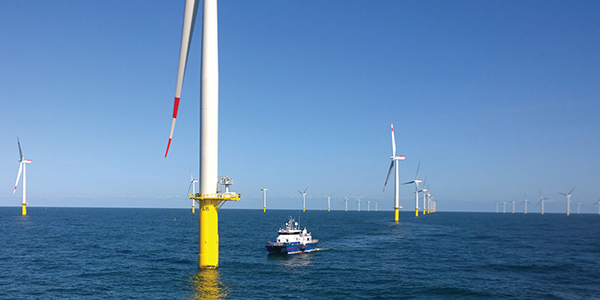Long-term resource adequacy in the Northeast could benefit from offshore wind projects, carbon pricing, nuclear power preservation, customer participation and a nudge toward investment from regulators.
That’s according to participants of a virtual panel as part of Greentech Media’s annual Power and Renewables Summit on Tuesday.
Jeffrey Stokes, senior director of power generation for Public Service Enterprise Group, said there’s an “interim” period of about 30 years in between now and a future in which there’s a total dependence on reliable renewable generation. He said for the interim period, nuclear generation remains vital.
Stokes said PJM should introduce carbon pricing or another way to value renewable and zero-carbon resources. He said more should be done to slow the rate of shutdown notices from nuclear plants in the Northeast and Midwest.
Unmentioned during the panel were the zero-emission credits that PSEG’s nuclear plants in New Jersey receive.
New Jersey Board of Public Utilities General Counsel Abe Silverman predicted widespread electrification will drive the need for a substantial amount of new renewable generation capacity. “We’re talking about serious load growth for the first time in two decades,” he said.
Silverman said offshore wind generation projects can bring a huge amount of capacity from the East Coast to western destinations. “These are very large projects: 800 [to] 1,000 MW.”
Moderator Matt DaPrato, Wood Mackenzie Power & Renewables’ head of research strategy, asked how much offshore wind in the Northeast would be hampered by grid operators’ lengthy interconnection queues and transmission routes that contain “old grid.”
The panelists said offshore projects will inevitability bear transmission upgrade costs.
“Those are the give-and-takes that you have to do to move such a large amount of power,” Stokes said.
“It’s absolutely something we see as a real barrier … in New Jersey,” Silverman added. He said that at least some offshore wind projects could be situated on old nuclear or coal plant sites readymade with existing infrastructure, such as Exelon’s former Oyster Creek Generating Station in New Jersey.
Nevertheless, Silverman said “a lot of projects will need to cross the beach,” which will make for “a very delicate” permitting process across beachfront properties.
He said he was jealous of New York’s two-in-one grid operator and resource adequacy manager governed by a single set of state regulations. He said resource adequacy coordination, generation planning and incenting carbon-cutting aren’t so simple in states that belong to RTOs, like New Jersey.
EDP Renewables Associate Director of Origination Kelly Snyder said she credits PJM’s commercial and industrial customers for pressing for new renewable generation.
Silverman said RTOs and ISOs generally don’t have the “appropriate market structure” to attract private investors to build new technologies or allow customers flexibility.”
“Demand was supposed to be dynamic. … State and federal markets have done a very poor job of including customers in the markets,” Silverman said.
He also said state regulators should consider introducing small incentives for renewable and battery storage projects.
“Batteries are a wonderful, clean way to backfill some reliability needs in some of these communities,” he said.




